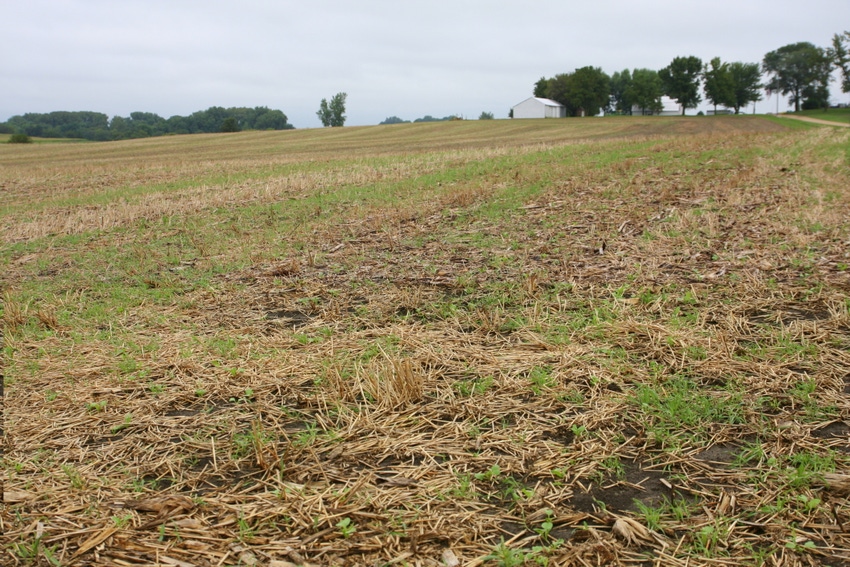
Kris Reynolds has worked in conservation for 17 years, and the last two years as Midwest deputy director for the American Farmland Trust. He is also a farmer from Nokomis, Ill., and spends much of his time working with farmers to see cover crops flourish on their farms.
From his experience of incorporating cover crops five years ago on his 750-acre farm and communicating with farmers as he travels the state, he offers these tips:
Identify your goals. Reynolds says producers need to ask themselves: What are you wanting to accomplish with cover crops? Is it to prevent soil erosion, improve water quality, scavenge nutrients, suppress weeds, improve soil health or save costs? Once this is determined, you can pair the right cover crop with your goal or goals, and see how it fits within your current rotation.
Know proper planting dates and application methods. “Timing is everything,” he says. More information is becoming available on when is the appropriate time to plant, as well as proper rates and seeding methods. In the early years of adoption, many saw failure due to planting radishes the first week of October. “We know that’s way too late to plant radishes if you want to get some kind of benefit out of them,” Reynolds says.
Choose right seed mix. Reynolds says as demand for cover crops has increased, so has salespeople’s knowledge. Having a relationship with a good cover crop supplier helps in making the right decision. A new study found that 89% of agricultural retailers have offered cover crop products and services in the past two years, and 94% say they want to expand these offerings in the future, according to a study conducted by Datu Research. Ag retailers may look to expand these offerings, as today these products and services account for less than 5% of ag retailers’ revenue.
Prepare for spring termination. Depending on the type of cover crops, some may terminate over winter, such as oats and radishes. Reynolds says it’s important for farmers to know how and when they plan to terminate ahead of the next cash grain crop and develop a plan A, B and sometimes C in order to have a smooth planting season in the spring. “If one spends $20 to $25 per acre to get the cover crop established and it doesn’t get terminated properly the next spring, it could end up resulting in a yield loss,” Reynolds warns. “You need to make sure all your ducks are in a row, and you’ve determined how you’re going to do it.”
Related: Economics prove cover crops pay
About the Author(s)
You May Also Like






